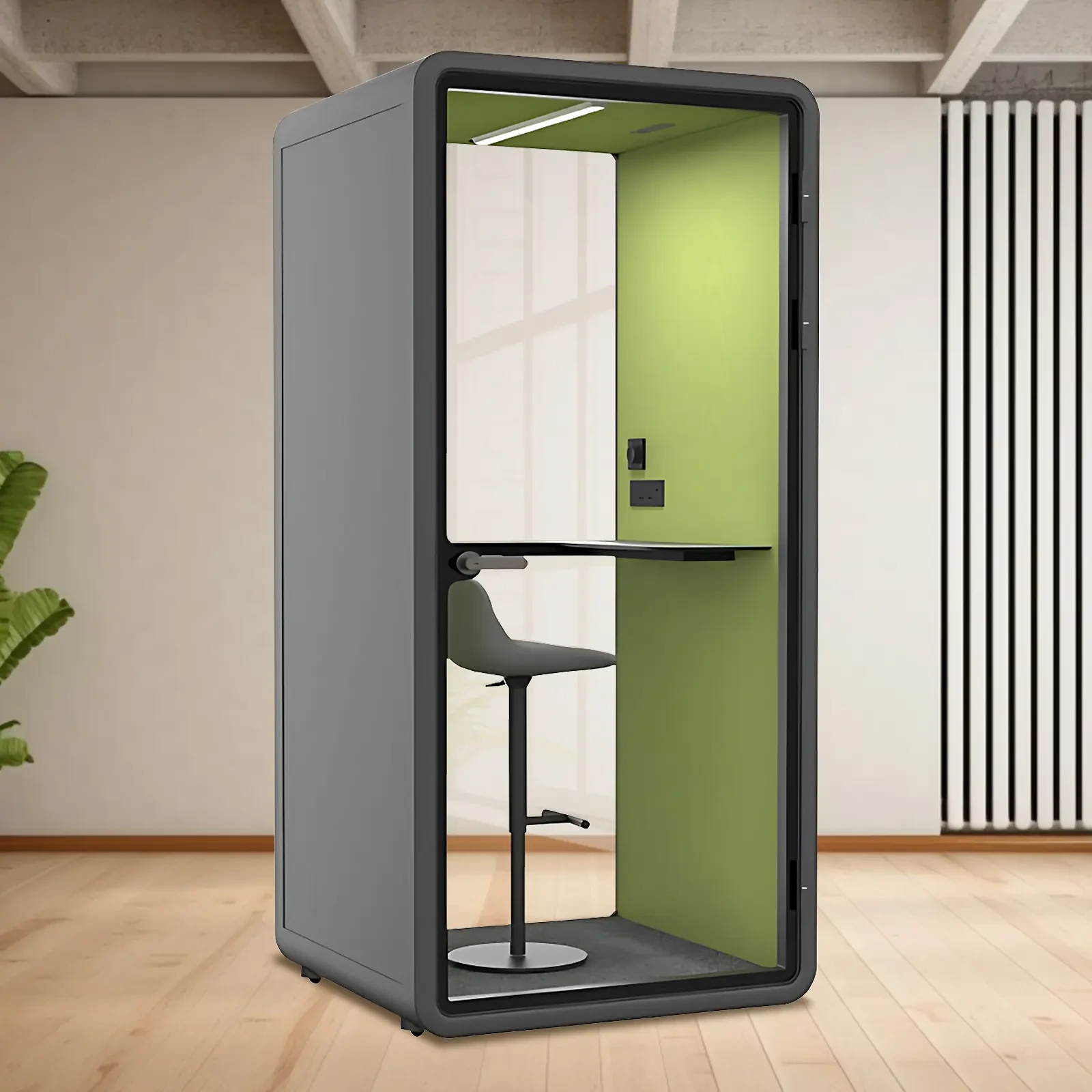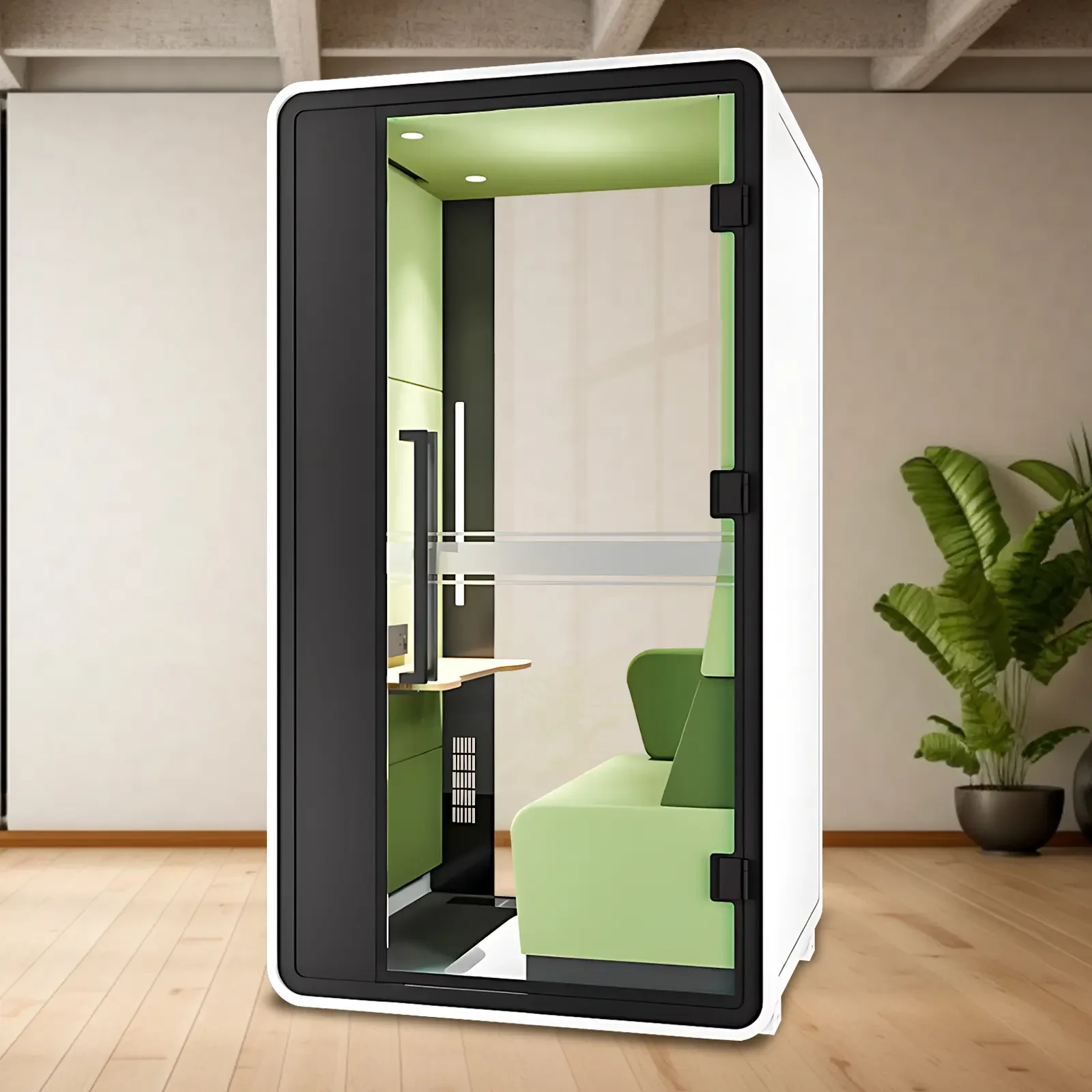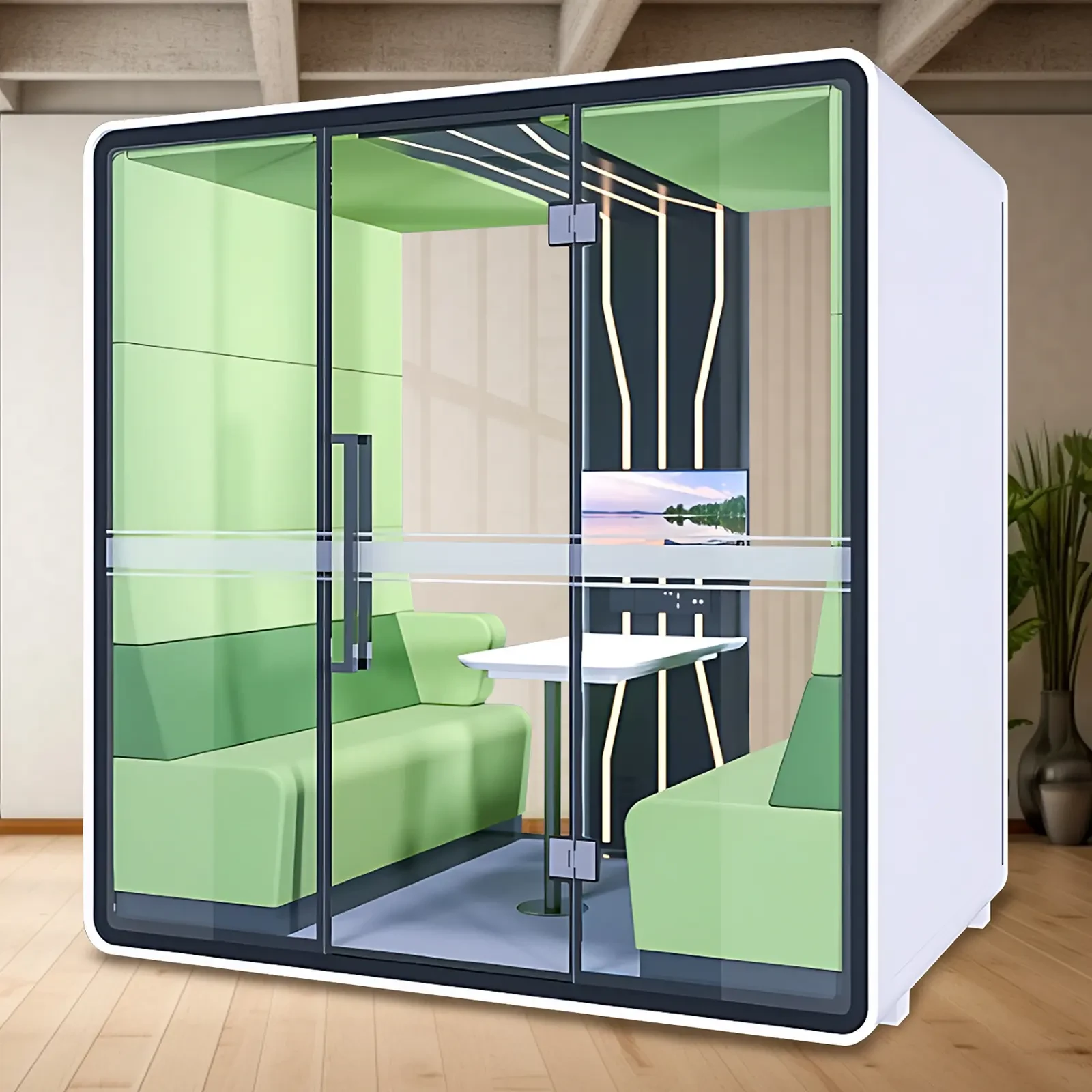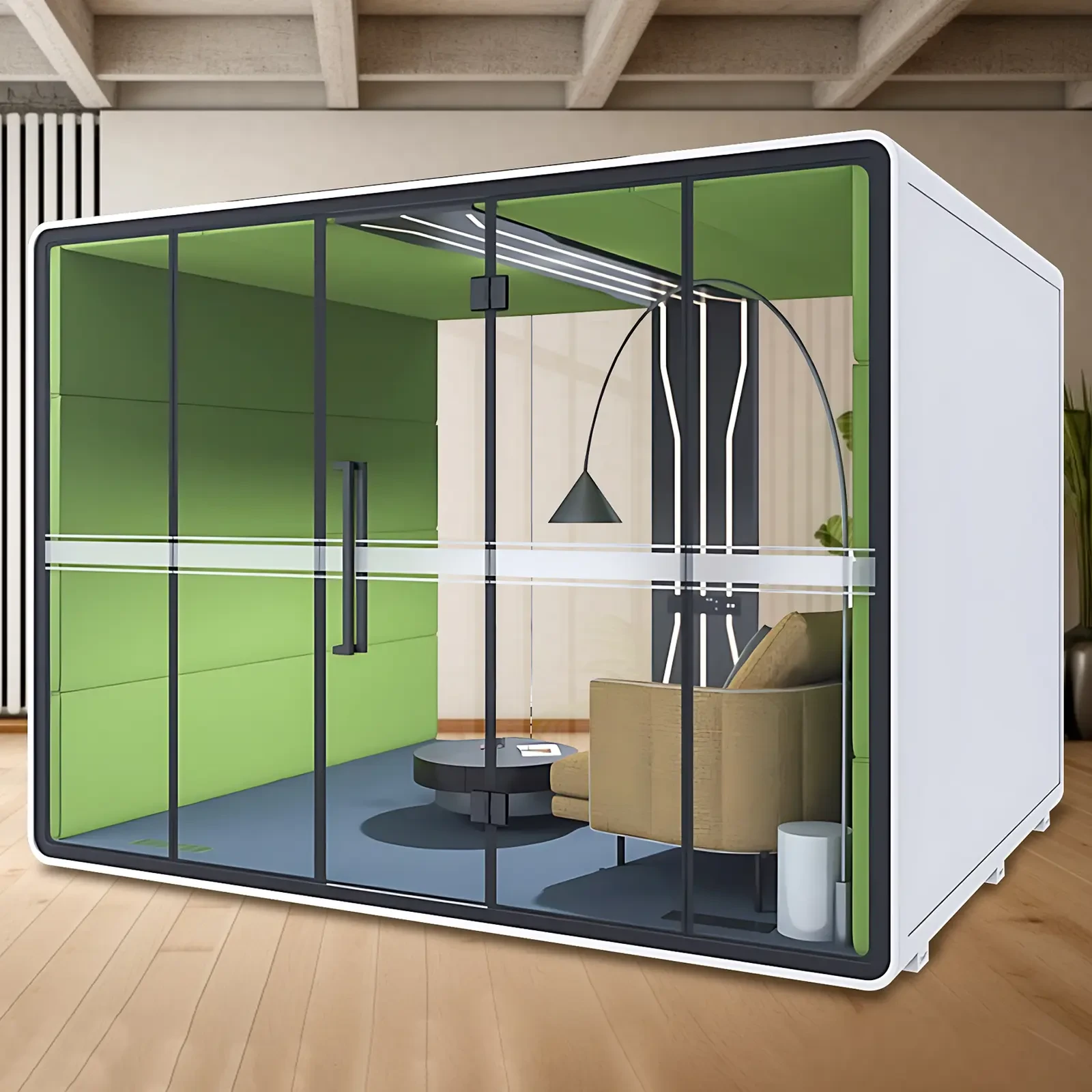The design requirements for quiet cabins in university libraries typically encompass multiple aspects, including acoustics, comfort, and functionality. The following are some common design requirements for quiet cabins in university libraries:
Acoustic Performance: The primary purpose of a quiet cabin is to provide a quiet study and reading environment. Therefore, the cabin should have excellent sound insulation and absorption properties to minimize external noise interference and prevent sound from transmitting to the outside.
Soundproofing Materials: Use high-efficiency soundproofing materials, such as dense fiberboard, sound-absorbing panels, and sound-absorbing foam, to cover the cabin's walls, ceiling, and floor to reduce both internal and external noise.
Soundproof Door Design: Design soundproof doors to ensure they have good sealing and soundproofing properties. The door opening and closing process should also be as quiet as possible.
Appropriate Layout: Consider the cabin's layout and ensure that furniture, equipment, and other elements are placed appropriately to avoid resonance or other noise transmission issues.
Lighting Design: Provide appropriate lighting, ensuring sufficient brightness while avoiding the use of noisy lighting. Ventilation System: Consider an effective ventilation system to ensure fresh air inside the cabin, but avoid using excessively noisy ventilation equipment.
Comfortable Furniture: Choose ergonomically comfortable furniture to enhance the user's working and learning experience within the quiet cabin.
Power Outlets: Provide sufficient power outlets within the quiet cabin to facilitate the use of electronic devices.
User Privacy: Ensure the quiet cabin provides sufficient user privacy to prevent outsiders from observing activities within the cabin.
Maintenance: Consider the maintainability of the quiet cabin to allow for regular inspection and maintenance to ensure its continued effective acoustic performance.
Fireproof Design: Consider fireproof design and ensure the quiet cabin meets relevant safety standards.
Adjustable Environment: Consider designing adjustable elements such as removable soundproofing panels, adjustable lighting, and adjustable temperature control to accommodate different user needs.
User Feedback: Collect user feedback during the design and use process to understand their needs and experiences with the quiet cabin and make necessary improvements. The above design requirements should be considered in collaboration with professional acoustic engineers and design teams, combined with specific usage scenarios and school requirements, to ensure that the university library silent cabin can achieve the best design effect.

 USD
USD
 GBP
GBP
 EUR
EUR






